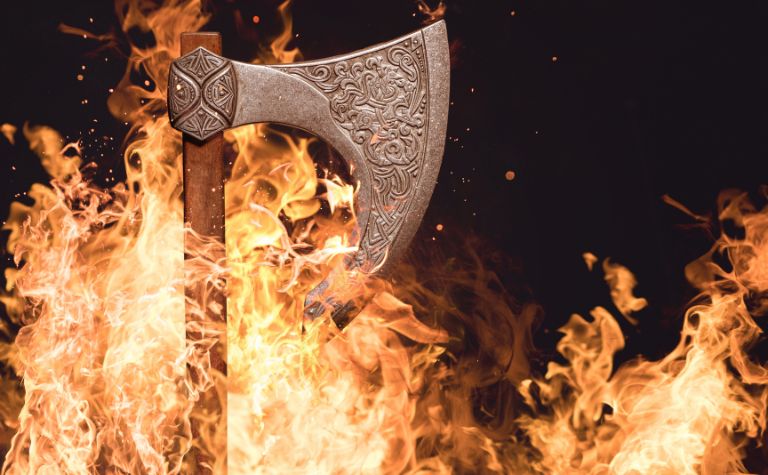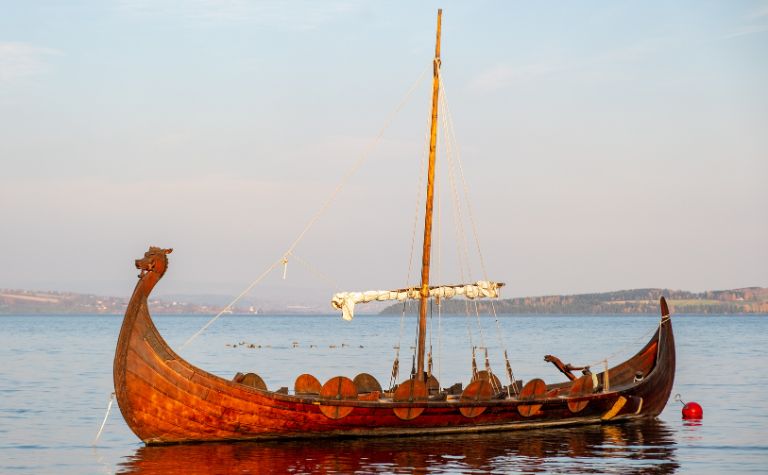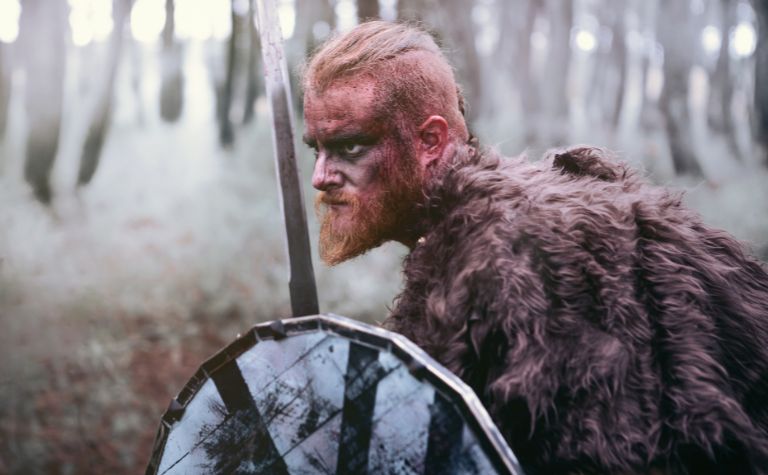With more and more depictions of the Vikings finding their way into contemporary pop culture, Norse mythology has never been more popular.
At the same time, many films and TV shows play fast and loose with facts. So, unsurprisingly, there are many popular misconceptions about the Viking afterlife.
If not Valhalla, a Viking’s soul could go to one of three unearthly realms, each presided over by a different Norse deity.
These were Folkvangr, presided over by Freyja; Hel, the dominion of Hel; and the Realm of Rán.
A Viking’s soul could also remain in the earthly realm after death.
This article will explain Norse beliefs regarding the afterlife and describe the different realms a Norse person’s soul could inhabit after death as per the Norse religion.
Also, see Can You Go To Valhalla without Dying in Battle? to learn more.

How Did Vikings Get To Valhalla? What Did They Do There?
Valkyries would screen Viking heroes slain in battle before entry into Valhalla, the great hall of the Norse god Odin.
There they would feast, drink, and prepare for war. On the occasion of Ragnarok – the Norse apocalypse – they would fight with Odin’s army in one final doomed battle. [1]
The Vikings were famous warriors and Norse culture adequately reflected their idolization of war.
It valorized bravery in battle and condemned cowardice. Inevitably, these ideals found their way into Norse beliefs in the afterlife.
However, not all Norse people were warriors; many were farmers, traders, and artisans.
While such members of the Norse community could aspire to other Norse honors, entry into Valhalla was not one of them.
Only the bravest Viking warriors who had fallen in battle would be permitted entry into Valhalla, the great hall of the most important of all Norse deities, Odin. [2]
These select few would be screened by the god’s female helpers, known as Valkyries, before being admitted into the great hall. [3]
The hall itself would be immense: according to legend, it had 540 doors and was large enough for 800 warriors to march through.
Its roof was made of golden shields and held up by spears. At the center of it, would sit Odin on the immense throne from which he could survey all the worldly realms.
Once in Valhalla, the brave warriors would indulge in that most pleasurable of Viking pastimes, feasting.
There would be no shortage of food and drink.
The boar, Saerimnir, roasting on the spit whose flame never died, would be magically replenished each day so that the brave Viking warriors would never go hungry.
And the goat, Heidrun, would perpetually supply mead from her udders for them to quench their thirst.
Other than partying, the warriors’ only concern would be to prepare for Ragnarok, the end of the world.
Then, they would receive one final honor: they would get to fight alongside Odin’s forces in taking on a common enemy.
For a Viking, this was the highest honor he could hope for.
It did not matter that the ending of the world was irreversible, and they, along with everything in the cosmos, were doomed to destruction.
Also, see Is Valhalla Heaven or Hell? to learn more.

What Is the Opposite of Valhalla?
There is no opposite of Valhalla. As the Vikings were pagans, their belief systems did not have the equivalents of Christian heaven and hell.
If one were to consider Valhalla a Viking heaven, the realm of the Viking afterlife that closest resembles the Christian hell would be Hel.
Famously, the Norse were among the later European people to convert to Christianity.
Their pagan belief system was not based on scripture and did not have clear conceptions of heaven or hell that can be compared to Christian ideas of the afterlife.
Because the Norse did not leave behind their texts, scholars have had to piece together the possible destinies of Viking souls from later texts.
But, even then, it is not always clear how or why Viking souls end up in one realm and not another.
For instance, some later literature suggests that the Norse hero Baldr may have been sent to Hel (and not Valhalla as might be imagined if Valhalla were to be considered a parallel to the Christian heaven).
To complicate matters further, the Norse did not share the Christian conception of a unified soul.
According to them, a soul could be divided into different aspects that reflect an individual’s physical appearance, character, spirit animal, and guardian spirit. [4]
Moreover, all of these need not end up in the same realm in the afterlife.
There is even some evidence that the Norse may have believed in some form of reincarnation.
Ultimately, in the words of the historian H.R. Ellis Davidson, “There is no consistent picture in Norse literary tradition of the fate of the dead.” [5]
With all these caveats in place, the realm of the Norse afterlife that most resembles the Christian hell (again assuming that Valhalla aligns with Christian heaven) is Hel.
While Hel, like hell, is described as a subterranean realm, it is gray and foggy and not full of fire and brimstone.
The goddess Hel, who presides over the realm, is most likely a Christian embellishment of the earlier pagan tradition.
Also, see Why Was Valhalla Important to the Vikings? to learn more.

Did Vikings Believe in Ghosts?
Vikings did believe in ghosts. According to Norse beliefs, a Viking’s soul could remain in the earthly realm after death in several forms.
A dead Viking could remain bound to their grave, haunt their lands, or continue to exist as a reanimated corpse or draugr.
Like most pagans, the Norse believed in spirits of various kinds.
Such spirits included an individual’s animal spirit, which reflected their personality, and their guardian spirit, which could influence their success in life.
They also believed that a departed soul, or even aspects of it, could remain in the earthly realm after death.
For instance, a haugbui was the soul of a dead Viking that remained trapped at their burial spot after death.
Draugr or aptrgangr were jealous spirits that haunted their possessions after death. And the Vikings even believed in a zombie-like conception of reanimated corpses.
In this case, only the physical aspect of a person survived death.
Conclusion
If not for Valhalla, a Viking’s soul could go to Folkvangr, Hel, the Realm of Rán, or remain in the earthly realm as a ghost.
Also, see Facts About Viking Longhouses to learn more.
References:
[1] Source
[2] Source
[3] Source
[4] Source
[5] Source
